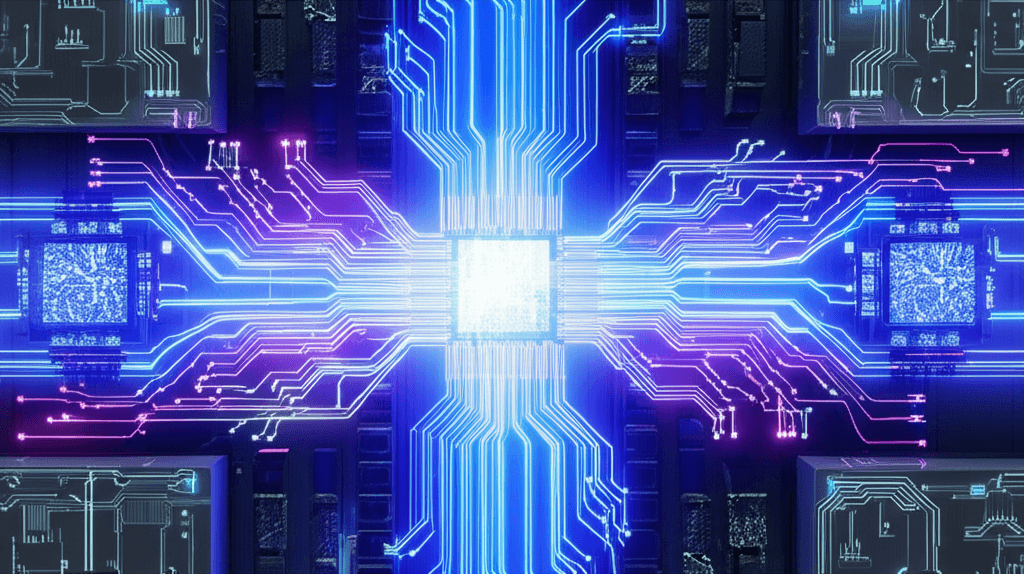OpenAI and Oracle Ignite Stargate: $500 Billion AI Infrastructure Powers Next-Gen Models
OpenAI and Oracle's Stargate: A $500 billion initiative building the colossal physical infrastructure for AI's next frontier.
July 23, 2025

OpenAI and its partners are dramatically escalating their investment in the physical infrastructure required to power the next generation of artificial intelligence, highlighted by a significant expansion with Oracle to bolster a massive data center project known as "Stargate." This move is a core component of a broader initiative to invest up to $500 billion in U.S.-based AI infrastructure over the next four years.[1][2][3][4] The collaboration underscores the immense and growing demand for computational power, a critical resource in the global race to develop more sophisticated AI models. The deal with Oracle will add 4.5 gigawatts (GW) of capacity to OpenAI's Stargate project, a substantial increase aimed at accommodating the massive workloads of large language models.[1][5][6][7]
The Stargate initiative, first announced in January 2025, is a joint venture involving OpenAI, SoftBank, Oracle, and the investment firm MGX.[2][8] Its ambitious goal is to develop 10 gigawatts of AI data center capacity in the United States.[1][9] This latest agreement with Oracle brings the total capacity under development for Stargate to over 5 GW, enough to run more than two million advanced AI chips.[1][9][10] The project is not just about raw power; it's a strategic effort to secure American leadership in AI, create a significant number of jobs, and drive economic growth.[1][11] OpenAI estimates that the 4.5 GW expansion alone will generate over 100,000 jobs in the U.S., spanning construction, operations, and other support roles.[5][11] The first Stargate facility, located in Abilene, Texas, is already under construction, with Oracle having begun delivery of next-generation Nvidia GB200 server racks to the site.[5][11][12]
This multi-partner approach is a strategic decision by OpenAI to diversify its infrastructure sources and ensure it has the flexibility to meet the voracious compute demands of frontier AI models.[5] While Microsoft remains a key cloud and technology partner for OpenAI, providing services through its Azure platform, the collaborations with Oracle, SoftBank, and GPU provider CoreWeave are crucial for scaling up the physical data center footprint.[1][13][14] SoftBank is contributing to site selection and facility design, while Oracle's role extends to building and operating the computing systems.[2][13] This division of labor allows OpenAI to maintain control over its core computational capabilities while leveraging the expertise of its partners in finance and large-scale infrastructure development.[5][15] The partnership with Oracle specifically extends the Microsoft Azure AI platform to Oracle Cloud Infrastructure (OCI), providing OpenAI with additional, much-needed capacity.[14][16]
The implications of this massive infrastructure build-out extend far beyond OpenAI. It signals a new era in the AI industry, where access to and control over specialized, high-powered data centers are becoming paramount. The sheer scale of the Stargate project, with its initial $100 billion investment and long-term $500 billion vision, is reshaping the competitive landscape.[2][15] It puts pressure on other major players like Google, Meta, and Amazon's AWS, who are also investing billions in their own data center expansions to keep pace with the AI revolution.[13][9] The OpenAI-Oracle partnership highlights a shift toward AI-specific data centers designed from the ground up to handle the immense power and cooling requirements of modern GPU clusters.[5] Furthermore, the project has garnered significant political support, framed as a national security imperative to ensure the U.S. stays ahead of global competitors, particularly China.[15][4]
Despite the ambitious announcements and strong momentum, the Stargate project is not without its challenges. Reports have surfaced about internal disagreements and delays, particularly between OpenAI and SoftBank regarding the location and management of new data center sites.[6][9][17][18] These issues have reportedly led to a scaling back of near-term goals, with a more modest target of building a smaller data center in Ohio by the end of 2025.[17][18] Questions have also been raised about the financing of the gargantuan project.[9][4] Nevertheless, OpenAI and Oracle are moving forward decisively with their expansion plans. The collaboration is already bearing fruit, with early training and inference workloads running on the new Nvidia hardware at the Abilene site.[11] This progress, coupled with stated plans to exceed the initial $500 billion commitment, demonstrates a powerful resolve to build the foundational infrastructure that will define the future of artificial intelligence.[1][6]
Sources
[1]
[2]
[3]
[7]
[10]
[11]
[12]
[14]
[15]
[16]
[17]
[18]